Sigma has finally brought their venerable APS-C trio of primes to Fuji’s X-mount. The Sigma 30mm f/1.4 is the middle child of the three lenses. Can this late addition still compete with the X-mount third-party market heating up?
The Sigma 30mm f/1.4 DC DN is in a unique position for Fuji X-mount. Fuji has 33mm and 35mm lenses available, so 30mm adds another new option to the mix. Can the Sigma stand out on Fuji cameras? Let’s find out.
Pros:
- Small and lightweight
- Tack sharp
- Great bokeh quality
- Some weather sealing
- Affordable price
Cons:
- Only weather-sealed at mount
- Some color fringing issues in challenging situations
- Would like an aperture ring on Fuji bodies
Sigma 30mm f/1.4 DC DN — Technical Specifications
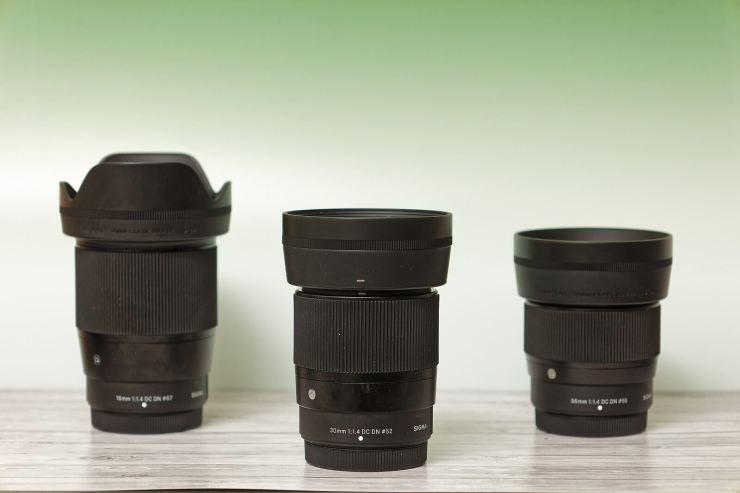
The technical specifications for the Sigma 30mm f/1.4 were taken from the B&H Product page:
- Aperture Range: f/1.4 to f/16
- Two Aspherical Elements
- One High-Refractive Index Element
- Super Multi-Layer Coating
- Stepping Motor AF System
- Rounded 9-Blade Diaphragm
Sigma 30mm f/1.4 DC DN — Ergonomics and build quality
.mgl-tiles { display: none; } #mgl-gallery-634ec47fe57ce { margin: -5px; width: calc(100% + 10px); } #mgl-gallery-634ec47fe57ce .mgl-box { padding: 5px; } @media screen and (max-width: 768px) { #mgl-gallery-634ec47fe57ce { margin: -5px; width: calc(100% + 10px); } #mgl-gallery-634ec47fe57ce .mgl-box { padding: 5px; } } @media screen and (max-width: 460px) { #mgl-gallery-634ec47fe57ce { margin: -5px; width: calc(100% + 10px); } #mgl-gallery-634ec47fe57ce .mgl-box { padding: 5px; } }
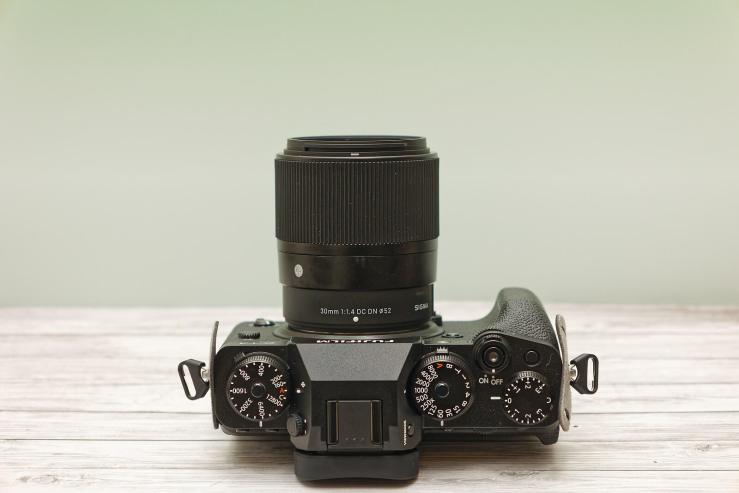
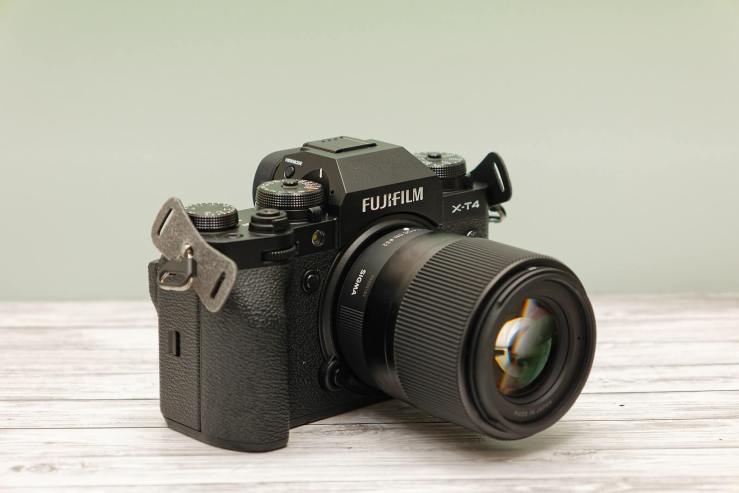
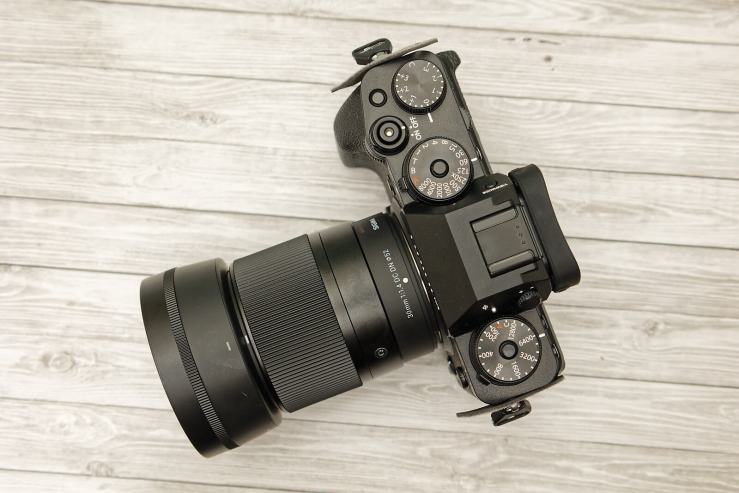
The Sigma 30mm f/1.4 DC DN is a simple lens. It has a nicely textured manual focus ring and that’s about it. It’s lightweight and small, fitting the X-T4 I tested exceptionally well. The lens sports a 52mm filter thread size as well. Handling-wise, this lens is about as basic as it can get.
Build Quality
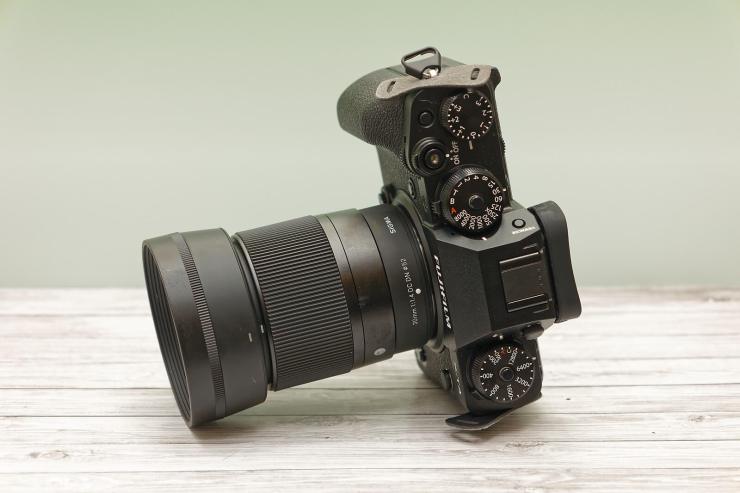
When it comes to build quality, the Sigma 30mm f/1.4 is good overall. The lens body seems to be made of tough composite material. The lens mount is brass and has a seal to help prevent moisture and dust from entering the mount.
However, it’s worth mentioning that the lens doesn’t appear to be weather-sealed anywhere else but the mount. That said, it’s still better than a lot of lenses at this price point. Sigma has done a nice job of balancing toughness, price, and size with this lens.
Sigma 30mm f/1.4 DC DN — In the field
.mgl-tiles { display: none; } #mgl-gallery-634ec47fe64da { margin: -5px; width: calc(100% + 10px); } #mgl-gallery-634ec47fe64da .mgl-box { padding: 5px; } @media screen and (max-width: 768px) { #mgl-gallery-634ec47fe64da { margin: -5px; width: calc(100% + 10px); } #mgl-gallery-634ec47fe64da .mgl-box { padding: 5px; } } @media screen and (max-width: 460px) { #mgl-gallery-634ec47fe64da { margin: -5px; width: calc(100% + 10px); } #mgl-gallery-634ec47fe64da .mgl-box { padding: 5px; } }





Due to how simple the Sigma 30mm f/1.4 is, using it couldn’t be easier. There’s no lens stabilization, but luckily, the X-T4 IBIS handles the job quite well. Likewise, if you want to switch to manual focus, the switch on the X-T4 gets you there, as there is no switch on the lens.
Speaking of manual focus, this lens is pretty similar to most other Sigma lenses. The focus ring is a lightly damped focus-by-wire system. It isn’t the best feeling focus ring in the world, but it’s on par with other modern lenses and gets the job done.
Sigma 30mm f/1.14 DC DN — Autofocus Performance
.mgl-tiles { display: none; } #mgl-gallery-634ec47fe771f { margin: -5px; width: calc(100% + 10px); } #mgl-gallery-634ec47fe771f .mgl-box { padding: 5px; } @media screen and (max-width: 768px) { #mgl-gallery-634ec47fe771f { margin: -5px; width: calc(100% + 10px); } #mgl-gallery-634ec47fe771f .mgl-box { padding: 5px; } } @media screen and (max-width: 460px) { #mgl-gallery-634ec47fe771f { margin: -5px; width: calc(100% + 10px); } #mgl-gallery-634ec47fe771f .mgl-box { padding: 5px; } }



The Sigma 30mm f/1.4 performed well in the autofocus department. On one of the test days, the wind was going crazy. I put the X-T4 in continuous AF and ended up capturing some nice shots of flowers despite them blowing around. It also handled face and eye-tracking duties well, keeping up with my friend while we walked.
In single autofocus, the lens was snappy and quick. It can run from minimum focus to infinite smoothly and quietly. It also performed rather well in video autofocus testing as well. My overall impression is that the X-T4’s capabilities are the limiting factor, not the lens.
Sigma 30mm f/1.4 DC DN — Image Quality

The Sigma 30mm f/1.4 DC DN may be an older lens design, but it still holds up well in 2022. This lens has many redeeming qualities and does its job well. If you’re looking for a lens to deliver the goods, this could be it. The only thing to report on is chromatic aberration. Let’s break down its qualities further.
Ghosting, flaring and chromatic aberrations
.mgl-tiles { display: none; } #mgl-gallery-634ec47fe8277 { margin: -5px; width: calc(100% + 10px); } #mgl-gallery-634ec47fe8277 .mgl-box { padding: 5px; } @media screen and (max-width: 768px) { #mgl-gallery-634ec47fe8277 { margin: -5px; width: calc(100% + 10px); } #mgl-gallery-634ec47fe8277 .mgl-box { padding: 5px; } } @media screen and (max-width: 460px) { #mgl-gallery-634ec47fe8277 { margin: -5px; width: calc(100% + 10px); } #mgl-gallery-634ec47fe8277 .mgl-box { padding: 5px; } }





This was the only area where the Sigma 30mm f/1.4 had some room for improvement. In the first photo above, I’ve cropped into a landscape shot to show the purple and green fringing that can occur in extreme lighting situations. As you can tell by the next two photos, the aberrations don’t show up in less challenging situations as much.
However, the last photo of the man on the boardwalk does display some heavy green fringing around the tree in the background. While the lens isn’t a horrible performer in this regard, it did suffer a bit from these issues.
As for flaring and ghosting, the Sigma performed admirably. There were a couple of situations where I noticed a small green ghosting artifact show up in the EVF. However, it took such a specific angle with the lens hood on to cause it, that I didn’t get the chance to reproduce it for a sample photo. Likewise, the Sigma retained excellent contrast and color when shooting into the sun in these scenes.
Sharpness
.mgl-tiles { display: none; } #mgl-gallery-634ec47fe9446 { margin: -5px; width: calc(100% + 10px); } #mgl-gallery-634ec47fe9446 .mgl-box { padding: 5px; } @media screen and (max-width: 768px) { #mgl-gallery-634ec47fe9446 { margin: -5px; width: calc(100% + 10px); } #mgl-gallery-634ec47fe9446 .mgl-box { padding: 5px; } } @media screen and (max-width: 460px) { #mgl-gallery-634ec47fe9446 { margin: -5px; width: calc(100% + 10px); } #mgl-gallery-634ec47fe9446 .mgl-box { padding: 5px; } }





If you want a bitingly sharp lens in the normal focal length range, the Sigma 30mm f/1.4 can deliver that. This lens is sharp from wide-open and only gets better as you stop down. Even on the Fuji X-T4’s 26-megapixel sensor, the Sigma was able to deliver detailed images that should more than please the pixel peepers among us.
Bokeh
.mgl-tiles { display: none; } #mgl-gallery-634ec47fea609 { margin: -5px; width: calc(100% + 10px); } #mgl-gallery-634ec47fea609 .mgl-box { padding: 5px; } @media screen and (max-width: 768px) { #mgl-gallery-634ec47fea609 { margin: -5px; width: calc(100% + 10px); } #mgl-gallery-634ec47fea609 .mgl-box { padding: 5px; } } @media screen and (max-width: 460px) { #mgl-gallery-634ec47fea609 { margin: -5px; width: calc(100% + 10px); } #mgl-gallery-634ec47fea609 .mgl-box { padding: 5px; } }






As always, bokeh is an incredibly subjective thing to judge. I find the Sigma 30mm to be a great performer in this category. I particularly like the bokeh it renders on subjects in the middle distance when wide-open. This lens has a little character to it, and I like that. Up close, the backgrounds fade into smooth oblivion nicely. Between the character of the bokeh and that signature “Sigma” contrast, the look this lens delivers is one that I really enjoy.
Color rendition
.mgl-tiles { display: none; } #mgl-gallery-634ec47febad0 { margin: -5px; width: calc(100% + 10px); } #mgl-gallery-634ec47febad0 .mgl-box { padding: 5px; } @media screen and (max-width: 768px) { #mgl-gallery-634ec47febad0 { margin: -5px; width: calc(100% + 10px); } #mgl-gallery-634ec47febad0 .mgl-box { padding: 5px; } } @media screen and (max-width: 460px) { #mgl-gallery-634ec47febad0 { margin: -5px; width: calc(100% + 10px); } #mgl-gallery-634ec47febad0 .mgl-box { padding: 5px; } }





I found the Sigma 30mm f/1.4 DC DN to deliver neutral, but vibrant and deep colors. Paired with the much-beloved Fuji color science, this lens can produce some stunning images. I didn’t notice that the lens had much effect on the white balance, staying nice and even. I didn’t have any issues with it rendering cool or warm tones.
Sigma 30mm f/1.4 DC DN — An excellent walk-around lens

The Sigma 30mm f/1.4 has proven to be a great all-around lens. I wouldn’t hesitate to throw this lens on an X-T4 and head out for a photowalk. It falls in at a 45mm full-frame equivalent, which makes it a nice standard focal length without being another boring 50mm equivalent.
While I did frequently reach for the nonexistent aperture ring while using it, the overall experience was a good one. Retailing for $339, this lens brings a lot of value for its price. If the lack of an aperture ring and the minor color fringing issues don’t bother you, it’s certainly worth looking at.
Tell your story with the second annual Visual Storytelling Conference!
Experience four days of interactive, online training sessions featuring a range of educational content with experienced photographers and content creators. This free event kicks off with a series of technical boot camps to build essential skills, followed by live, online sessions on photography, video, business and social media. Join live from March 10-13, 2022!
